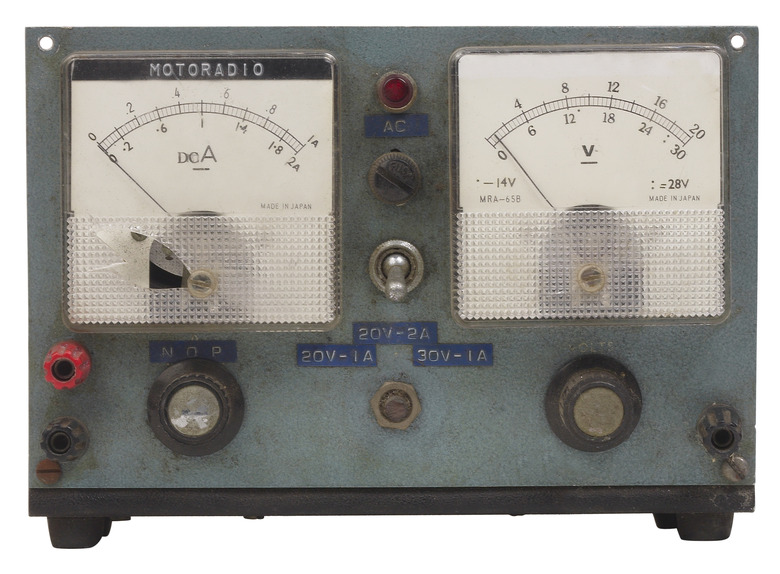How To Adjust Electrical Amperage
Use Ohm's Law to determine how to adjust amperage to reach a specific end result. Ohm's Law states that voltage is the product of current multiplied by resistance, and current is voltage divided by resistance. Therefore, once you determine the voltage and current level you are looking to obtain, you can use Ohm's Law to accomplish your objective.
Step 1
Find the voltage requirements, or "V," associated with the circuit. Refer to the electrical schematics. As an example, assume 120 volts.
Step 2
Choose the amperage level or current level you want to reach. Call this value "I." You choose based on the needs of your circuit. As an example, assume you need I at 5 amps.
Step 3
Calculate the resistor value necessary to reach I using the formula R = V/I. Using the example numbers:
R = 120/5 = 24 ohms
Step 4
Install a resistor with the resistor value from Step 3 in the circuit if you only need a one-time adjustment. However, if you are looking to adjust amperage continuously, consider installing a potentiometer where you can increase or decrease the current flow by simply turning a knob. Use Step 1 through Step 3 to determine the range of resistor values you need, and then choose a potentiometer that can accommodate that range.
Cite This Article
MLA
Chestnut, Dwight. "How To Adjust Electrical Amperage" sciencing.com, https://www.sciencing.com/how-8715127-adjust-electrical-amperage/. 7 August 2017.
APA
Chestnut, Dwight. (2017, August 7). How To Adjust Electrical Amperage. sciencing.com. Retrieved from https://www.sciencing.com/how-8715127-adjust-electrical-amperage/
Chicago
Chestnut, Dwight. How To Adjust Electrical Amperage last modified March 24, 2022. https://www.sciencing.com/how-8715127-adjust-electrical-amperage/
